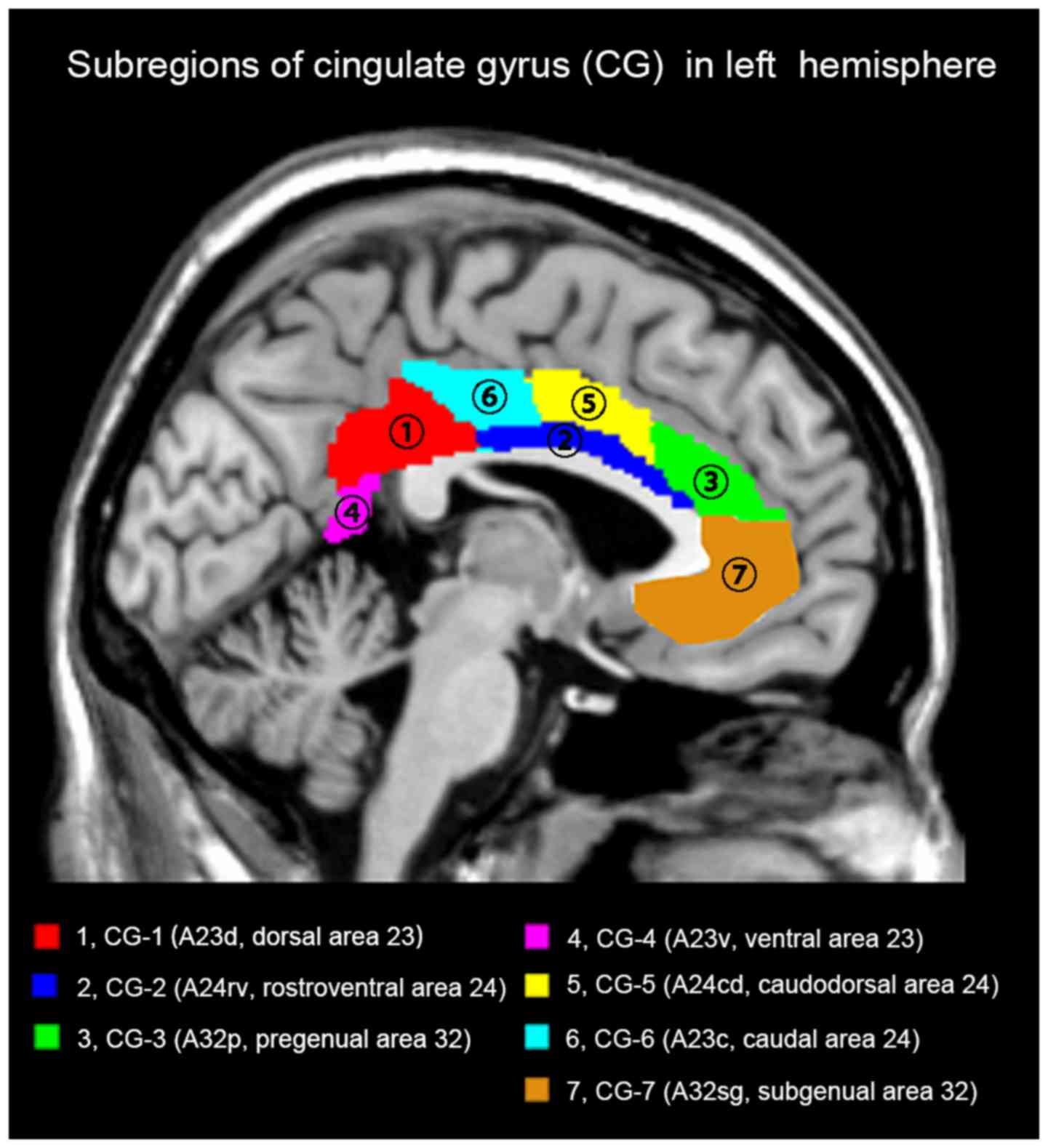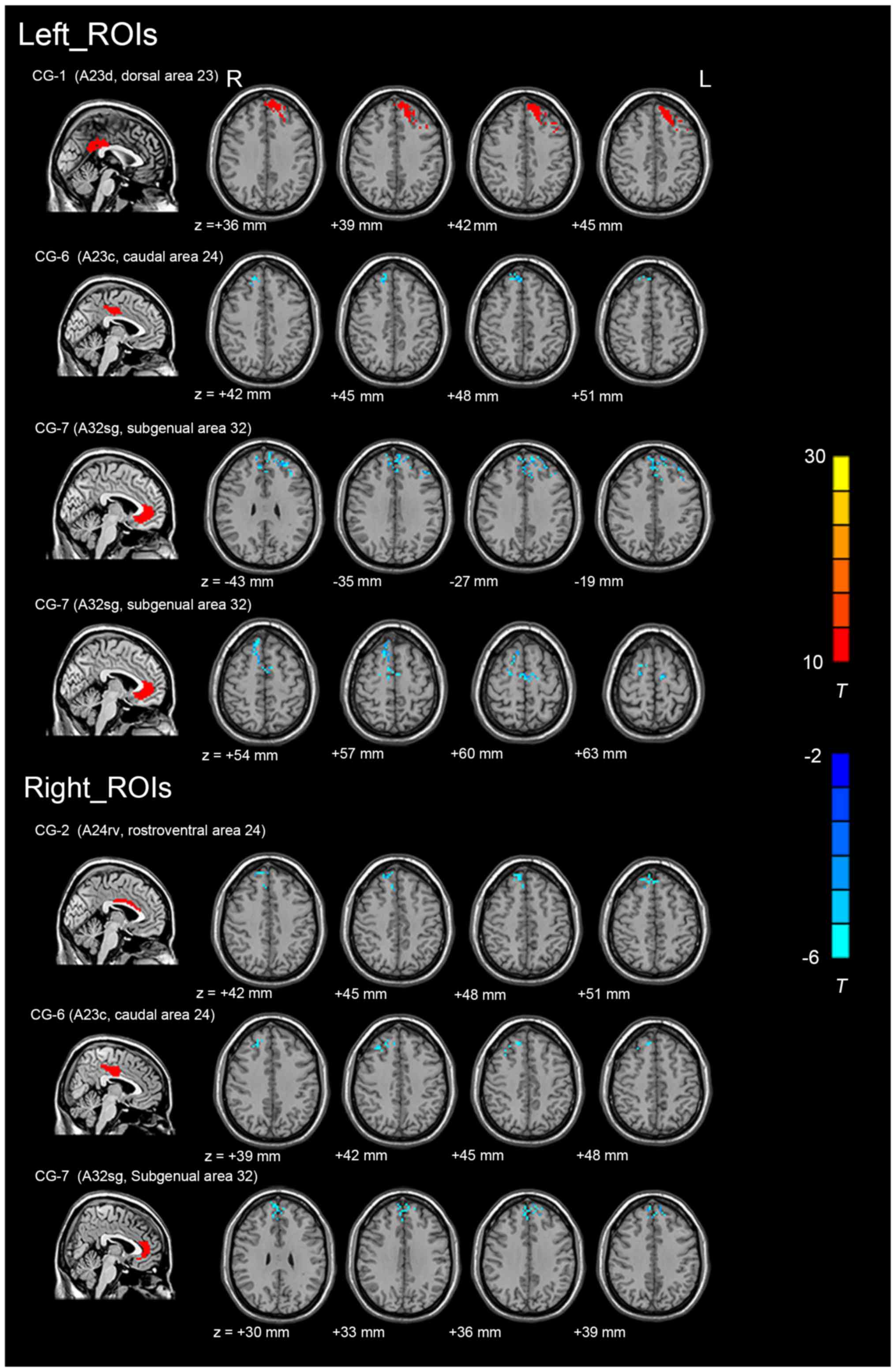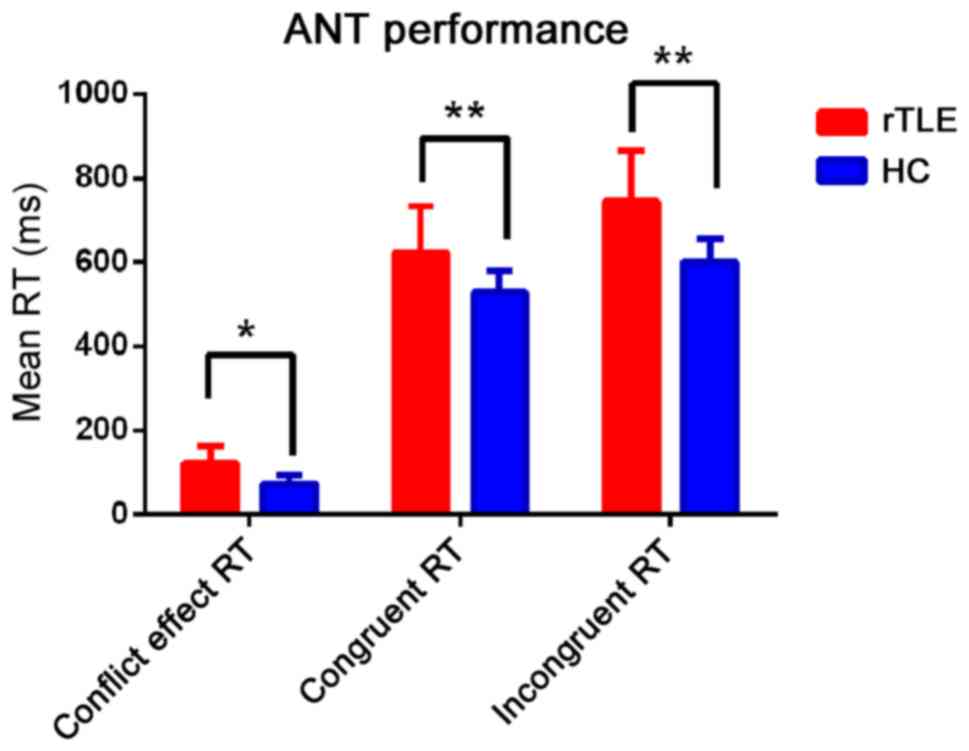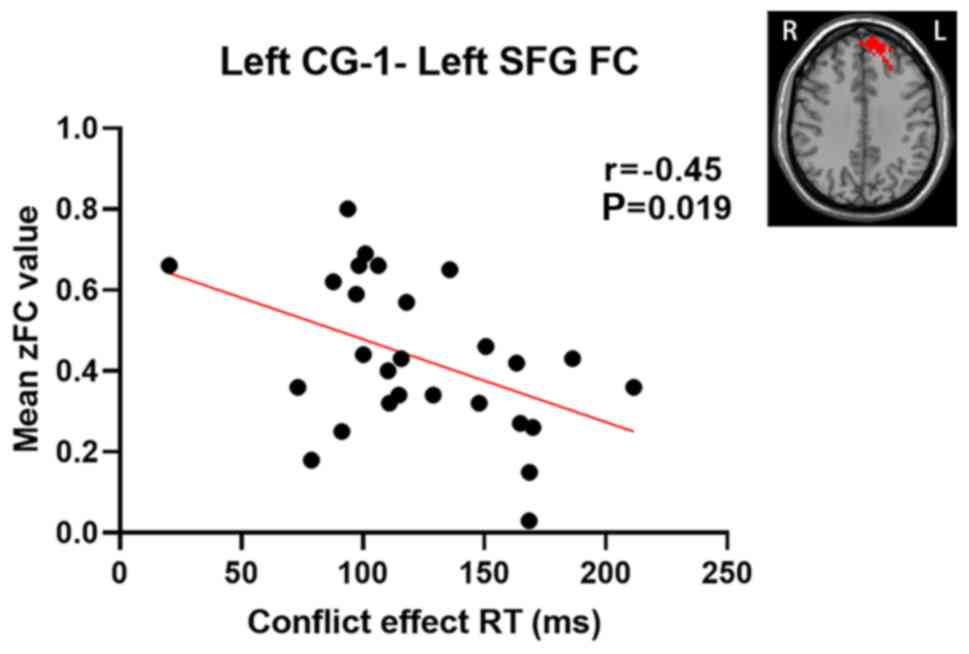|
1
|
Behr C, Goltzene M, Kosmalski G, Hirsch E
and Ryvlin P: Epidemiology of epilepsy. Rev Neurol (Paris).
172:27–36. 2016.PubMed/NCBI View Article : Google Scholar
|
|
2
|
Téllez-Zenteno JF and Hernández-Ronquillo
L: A review of the epidemiology of temporal lobe epilepsy. Epilepsy
Res Treat. 2012(630853)2012.PubMed/NCBI View Article : Google Scholar
|
|
3
|
Jo HJ, Kenney-Jung DL, Balzekas I, Welker
KM, Jones DT, Croarkin PE, Benarroch EE and Worrell GA:
Relationship between seizure frequency and functional abnormalities
in limbic network of medial temporal lobe epilepsy. Front Neurol.
10(488)2019.PubMed/NCBI View Article : Google Scholar
|
|
4
|
Urbach H, Egger K, Rutkowski K, Nakagawa
JM, Schmeiser B, Reisert M, Brandt A, Steinhoff BJ, Schulze-Bonhage
A and Hammen T: Bilateral cingulum fiber reductions in temporal
lobe epilepsy with unilateral hippocampal sclerosis. Eur J Radiol.
94:53–57. 2017.PubMed/NCBI View Article : Google Scholar
|
|
5
|
Guo L, Bai G, Zhang H, Lu D, Zheng J and
Xu G: Cognitive functioning in temporal lobe epilepsy: A BOLD-fMRI
study. Mol Neurobiol. 54:8361–8369. 2017.PubMed/NCBI View Article : Google Scholar
|
|
6
|
Coan AC, Appenzeller S, Bonilha L, Li LM
and Cendes F: Seizure frequency and lateralization affect
progression of atrophy in temporal lobe epilepsy. Neurology.
73:834–842. 2009.PubMed/NCBI View Article : Google Scholar
|
|
7
|
Fox MD, Snyder AZ, Vincent JL, Corbetta M,
Van Essen DC and Raichle ME: The human brain is intrinsically
organized into dynamic, anticorrelated functional networks. Proc
Natl Acad Sci USA. 102:9673–9678. 2005.PubMed/NCBI View Article : Google Scholar
|
|
8
|
Yu C, Zhou Y, Liu Y, Jiang T, Dong H,
Zhang Y and Walter M: Functional segregation of the human cingulate
cortex is confirmed by functional connectivity based
neuroanatomical parcellation. Neuroimage. 54:2571–2581.
2011.PubMed/NCBI View Article : Google Scholar
|
|
9
|
Peterson BS, Skudlarski P, Gatenby JC,
Zhang H, Anderson AW and Gore JC: An fMRI study of Stroop
word-color interference: Evidence for cingulate subregions
subserving multiple distributed attentional systems. Biol
Psychiatry. 45:1237–1258. 1999.PubMed/NCBI View Article : Google Scholar
|
|
10
|
Shackman AJ, Salomons TV, Slagter HA, Fox
AS, Winter JJ and Davidson RJ: The integration of negative affect,
pain and cognitive control in the cingulate cortex. Nat Rev
Neurosci. 12:154–167. 2011.PubMed/NCBI View
Article : Google Scholar
|
|
11
|
Torta DM and Cauda F: Different functions
in the cingulate cortex, a meta-analytic connectivity modeling
study. Neuroimage. 56:2157–2172. 2011.PubMed/NCBI View Article : Google Scholar
|
|
12
|
Narenmandula B, Zhou X, Li Y, Tu D, Bao Y,
Zheng R and Xu H: Effects of white matter microstructure lesions on
language and memory function in magnetic resonance imaging-negative
temporal lobe epilepsy determined by diffusion tensor imaging.
Neurol India. 64:1233–1242. 2016.PubMed/NCBI View Article : Google Scholar
|
|
13
|
Kojan M, Doležalová I, Koriťáková E,
Mareček R, Řehák Z, Hermanová M, Brázdil M and Rektor I: Predictive
value of preoperative statistical parametric mapping of regional
glucose metabolism in mesial temporal lobe epilepsy with
hippocampal sclerosis. Epilepsy Behav. 79:46–52. 2018.PubMed/NCBI View Article : Google Scholar
|
|
14
|
Zeng H, Pizarro R, Nair VA, La C and
Prabhakaran V: Alterations in regional homogeneity of resting-state
brain activity in mesial temporal lobe epilepsy. Epilepsia.
54:658–666. 2013.PubMed/NCBI View Article : Google Scholar
|
|
15
|
Chiang S, Stern JM, Engel J Jr and Haneef
Z: Structural-functional coupling changes in temporal lobe
epilepsy. Brain Res. 1616:45–57. 2015.PubMed/NCBI View Article : Google Scholar
|
|
16
|
Vogt BA, Nimchinsky EA, Vogt LJ and Hof
PR: Human cingulate cortex: Surface features, flat maps, and
cytoarchitecture. J Comp Neurol. 359:490–506. 1995.PubMed/NCBI View Article : Google Scholar
|
|
17
|
Vogt BA: Pain and emotion interactions in
subregions of the cingulate gyrus. Nat Rev Neurosci. 6:533–544.
2005.PubMed/NCBI View
Article : Google Scholar
|
|
18
|
Beckmann M, Johansen-Berg H and Rushworth
MF: Connectivity-based parcellation of human cingulate cortex and
its relation to functional specialization. J Neurosci.
29:1175–1190. 2009.PubMed/NCBI View Article : Google Scholar
|
|
19
|
Fan L, Li H, Zhuo J, Zhang Y, Wang J, Chen
L, Yang Z, Chu C, Xie S, Laird AR, et al: The human brainnetome
atlas: A new brain atlas based on connectional architecture. Cereb
Cortex. 26:3508–3526. 2016.PubMed/NCBI View Article : Google Scholar
|
|
20
|
Fan J, McCandliss BD, Sommer T, Raz A and
Posner MI: Testing the efficiency and independence of attentional
networks. J Cogn Neurosci. 14:340–347. 2002.PubMed/NCBI View Article : Google Scholar
|
|
21
|
Manford M, Fish DR and Shorvon SD: An
analysis of clinical seizure patterns and their localizing value in
frontal and temporal lobe epilepsies. Brain. 119:17–40.
1996.PubMed/NCBI View Article : Google Scholar
|
|
22
|
Yan CG, Wang XD, Zuo XN and Zang YF:
DPABI: Data processing and analysis for (Resting-State) brain
imaging. Neuroinformatics. 14:339–351. 2016.PubMed/NCBI View Article : Google Scholar
|
|
23
|
Liao W, Wu GR, Xu Q, Ji GJ, Zhang Z, Zang
YF and Lu G: DynamicBC: A MATLAB toolbox for dynamic brain
connectome analysis. Brain Connect. 4:780–790. 2014.PubMed/NCBI View Article : Google Scholar
|
|
24
|
Lowe MJ, Mock BJ and Sorenson JA:
Functional connectivity in single and multislice echoplanar imaging
using resting-state fluctuations. Neuroimage. 7:119–132.
1998.PubMed/NCBI View Article : Google Scholar
|
|
25
|
Li J, Chen X, Ye W, Jiang W, Liu H and
Zheng J: Alteration of the alertness-related network in patients
with right temporal lobe epilepsy: A resting state fMRI study.
Epilepsy Res. 127:252–259. 2016.PubMed/NCBI View Article : Google Scholar
|
|
26
|
Fan J, McCandliss BD, Fossella J, Flombaum
JI and Posner MI: The activation of attentional networks.
Neuroimage. 26:471–479. 2005.PubMed/NCBI View Article : Google Scholar
|
|
27
|
Li R, Liu K, Ma X, Li Z, Duan X, An D,
Gong Q, Zhou D and Chen H: Altered functional connectivity patterns
of the insular subregions in psychogenic nonepileptic seizures.
Brain Topogr. 28:636–645. 2015.PubMed/NCBI View Article : Google Scholar
|
|
28
|
Heilbronner SR and Hayden BY: Dorsal
anterior cingulate cortex: A bottom-up view. Annu Rev Neurosci.
39:149–170. 2016.PubMed/NCBI View Article : Google Scholar
|
|
29
|
Braem S, King JA, Korb FM, Krebs RM,
Notebaert W and Egner T: The role of anterior cingulate cortex in
the affective evaluation of conflict. J Cogn Neurosci. 29:137–149.
2017.PubMed/NCBI View Article : Google Scholar
|
|
30
|
Boschin EA, Brkic MM, Simons JS and
Buckley MJ: Distinct roles for the anterior cingulate and
dorsolateral prefrontal cortices during conflict between abstract
rules. Cereb Cortex. 27:34–45. 2017.PubMed/NCBI View Article : Google Scholar
|
|
31
|
Cui F, Zhou L, Wang Z, Lang C, Park J, Tan
Z, Yu Y, Sun C, Gao Y and Kong J: Altered functional connectivity
of striatal subregions in patients with multiple sclerosis. Front
Neurol. 8(129)2017.PubMed/NCBI View Article : Google Scholar
|
|
32
|
Yang R, Gao C, Wu X, Yang J, Li S and
Cheng H: Decreased functional connectivity to posterior cingulate
cortex in major depressive disorder. Psychiatry Res Neuroimaging.
255:15–23. 2016.PubMed/NCBI View Article : Google Scholar
|
|
33
|
Vatansever D, Menon DK, Manktelow AE,
Sahakian BJ and Stamatakis EA: Default mode network connectivity
during task execution. Neuroimage. 122:96–104. 2015.PubMed/NCBI View Article : Google Scholar
|
|
34
|
Vogt BA: Midcingulate cortex: Structure,
connections, homologies, functions and diseases. J Chem Neuroanat.
74:28–46. 2016.PubMed/NCBI View Article : Google Scholar
|
|
35
|
Caruana F, Gerbella M, Avanzini P, Gozzo
F, Pelliccia V, Mai R, Abdollahi RO, Cardinale F, Sartori I, Lo
Russo G and Rizzolatti G: Motor and emotional behaviours elicited
by electrical stimulation of the human cingulate cortex. Brain.
141:3035–3051. 2018.PubMed/NCBI View Article : Google Scholar
|
|
36
|
Fox MD, Corbetta M, Snyder AZ, Vincent JL
and Raichle ME: Spontaneous neuronal activity distinguishes human
dorsal and ventral attention systems. Proc Natl Acad Sci USA.
103:10046–10051. 2006.PubMed/NCBI View Article : Google Scholar
|
|
37
|
Bush G, Luu P and Posner MI: Cognitive and
emotional influences in anterior cingulate cortex. Trends Cogn Sci.
4:215–222. 2000.PubMed/NCBI View Article : Google Scholar
|
|
38
|
Vogt BA, Finch DM and Olson CR: Functional
heterogeneity in cingulate cortex: The anterior executive and
posterior evaluative regions. Cereb Cortex. 2:435–443.
1992.PubMed/NCBI View Article : Google Scholar
|
|
39
|
Breton F, Planté A, Legauffre C, Morel N,
Ades J, Gorwood P, Ramoz N and Dubertret C: The executive control
of attention differentiates patients with schizophrenia, their
first-degree relatives and healthy controls. Neuropsychologia.
49:203–208. 2011.PubMed/NCBI View Article : Google Scholar
|
|
40
|
Li W, Qin W, Liu H, Fan L, Wang J, Jiang T
and Yu C: Subregions of the human superior frontal gyrus and their
connections. Neuroimage. 78:46–58. 2013.PubMed/NCBI View Article : Google Scholar
|
|
41
|
Dupont P, Zaknun JJ, Maes A, Tepmongkol S,
Vasquez S, Bal CS, Van Paesschen W, Carpintiero S, Locharernkul C
and Dondi M: Dynamic perfusion patterns in temporal lobe epilepsy.
Eur J Nucl Med Mol Imaging. 36:823–830. 2009.PubMed/NCBI View Article : Google Scholar
|
|
42
|
Pittau F, Grova C, Moeller F, Dubeau F and
Gotman J: Patterns of altered functional connectivity in mesial
temporal lobe epilepsy. Epilepsia. 53:1013–1023. 2012.PubMed/NCBI View Article : Google Scholar
|
|
43
|
Lv ZX, Huang DH, Ye W, Chen ZR, Huang WL
and Zheng JO: Alteration of functional connectivity within
visuospatial working memory-related brain network in patients with
right temporal lobe epilepsy: A resting-state fMRI study. Epilepsy
Behav. 35:64–71. 2014.PubMed/NCBI View Article : Google Scholar
|
|
44
|
Ke M, Jin B, Liu G and Yang X: Impairments
of cingulated cortex in the generalized tonic-clonic seizure
epilepsy by combining morphological and functional connectivity
magnetic resonance imaging. J Integr Neurosci. 16:429–439.
2017.PubMed/NCBI View Article : Google Scholar
|
|
45
|
Casey BJ, Thomas KM, Welsh TF, Badgaiyan
RD, Eccard CH, Jennings JR and Crone EA: Dissociation of response
conflict, attentional selection, and expectancy with functional
magnetic resonance imaging. Proc Natl Acad Sci USA. 97:8728–8733.
2000.PubMed/NCBI View Article : Google Scholar
|
|
46
|
Pardo JV, Fox PT and Raichle ME:
Localization of a human system for sustained attention by positron
emission tomography. Nature. 349:61–64. 1991.PubMed/NCBI View Article : Google Scholar
|
|
47
|
Spreng RN, Stevens WD, Chamberlain JP,
Gilmore AW and Schacter DL: Default network activity, coupled with
the frontoparietal control network, supports goal-directed
cognition. Neuroimage. 53:303–317. 2010.PubMed/NCBI View Article : Google Scholar
|
|
48
|
Labate A, Cerasa A, Aguglia U, Mumoli L,
Quattrone A and Gambardella A: Neocortical thinning in ‘benign’
mesial temporal lobe epilepsy. Epilepsia. 52:712–717.
2011.PubMed/NCBI View Article : Google Scholar
|
|
49
|
Afzali M, Soltanian-Zadeh H and Elisevich
KV: Tract based spatial statistical analysis and voxel based
morphometry of diffusion indices in temporal lobe epilepsy. Comput
Biol Med. 41:1082–1091. 2011.PubMed/NCBI View Article : Google Scholar
|
|
50
|
Tailby C, Kowalczyk MA and Jackson GD:
Cognitive impairment in epilepsy: The role of reduced network
flexibility. Ann Clin Transl Neurol. 5:29–40. 2017.PubMed/NCBI View Article : Google Scholar
|
|
51
|
Raichle ME: The brain's default mode
network. Annu Rev Neurosci. 38:433–447. 2015.PubMed/NCBI View Article : Google Scholar
|
|
52
|
Haneef Z, Lenartowicz A, Yeh HJ, Engel J
Jr and Stern JM: Effect of lateralized temporal lobe epilepsy on
the default mode network. Epilepsy Behav. 25:350–357.
2012.PubMed/NCBI View Article : Google Scholar
|
|
53
|
Hsiao FJ, Yu HY, Chen WT, Kwan SY, Chen C,
Yen DJ, Yiu CH, Shih YH and Lin YY: Increased intrinsic
connectivity of the default mode network in temporal lobe epilepsy:
Evidence from resting-state MEG recordings. PLoS One.
10(e0128787)2015.PubMed/NCBI View Article : Google Scholar
|
|
54
|
Yang H, Zhang C, Liu C, Yu T, Zhang G,
Chen N and Li K: Brain network alteration in patients with temporal
lobe epilepsy with cognitive impairment. Epilepsy Behav. 81:41–48.
2018.PubMed/NCBI View Article : Google Scholar
|
|
55
|
Liu M, Bernhardt BC, Hong SJ, Caldairou B,
Bernasconi A and Bernasconi N: The superficial white matter in
temporal lobe epilepsy: A key link between structural and
functional network disruptions. Brain. 139:2431–2440.
2016.PubMed/NCBI View Article : Google Scholar
|
|
56
|
Khalsa S, Mayhew SD, Chechlacz M, Bagary M
and Bagshaw AP: The structural and functional connectivity of the
posterior cingulate cortex: Comparison between deterministic and
probabilistic tractography for the investigation of
structure-function relationships. Neuroimage. 102:118–127.
2014.PubMed/NCBI View Article : Google Scholar
|
|
57
|
Koshino H, Minamoto T, Yaoi K, Osaka M and
Osaka N: Coactivation of the default mode Network regions and
Working Memory Network regions during task preparation. Sci Rep.
4(5954)2014.PubMed/NCBI View Article : Google Scholar
|
|
58
|
Zhou X, Zhang Z, Liu J, Qin L and Zheng J:
Aberrant topological organization of the default mode network in
temporal lobe epilepsy revealed by graph-theoretical analysis.
Neurosci Lett. 708(134351)2019.PubMed/NCBI View Article : Google Scholar
|
|
59
|
Haneef Z, Lenartowicz A, Yeh HJ, Engel J
Jr and Stern JM: Network analysis of the default mode network using
functional connectivity MRI in temporal lobe epilepsy. J Vis Exp.
90(e51442)2014.PubMed/NCBI View
Article : Google Scholar
|
|
60
|
Zhang Z, Lu G, Zhong Y, Tan Q, Yang Z,
Liao W, Chen Z, Shi J and Liu Y: Impaired attention network in
temporal lobe epilepsy: A resting FMRI study. Neurosci Lett.
458:97–101. 2009.PubMed/NCBI View Article : Google Scholar
|
|
61
|
Li X, Hou Y, Ren Y, Tian X and Song Y:
Alterations of theta oscillation in executive control in temporal
lobe epilepsy patients. Epilepsy Res. 140:148–154. 2018.PubMed/NCBI View Article : Google Scholar
|
|
62
|
Hampson M, Driesen NR, Skudlarski P, Gore
JC and Constable RT: Brain connectivity related to working memory
performance. J Neurosci. 26:13338–13343. 2006.PubMed/NCBI View Article : Google Scholar
|
|
63
|
Gregory S, Long JD, Tabrizi SJ and Rees G:
Measuring compensation in neurodegeneration using MRI. Curr Opin
Neurol. 30:380–387. 2017.PubMed/NCBI View Article : Google Scholar
|
|
64
|
Spagna A, Kim TH, Wu T and Fan J: Right
hemisphere superiority for executive control of attention. Cortex.
Dec 29. 2018.(Epub ahead of print). doi:
10.1016/j.cortex.2018.12.012. PubMed/NCBI View Article : Google Scholar
|
|
65
|
Chiang S, Stern JM, Engel J Jr, Levin HS
and Haneef Z: Differences in graph theory functional connectivity
in left and right temporal lobe epilepsy. Epilepsy Res.
108:1770–1781. 2014.PubMed/NCBI View Article : Google Scholar
|


















